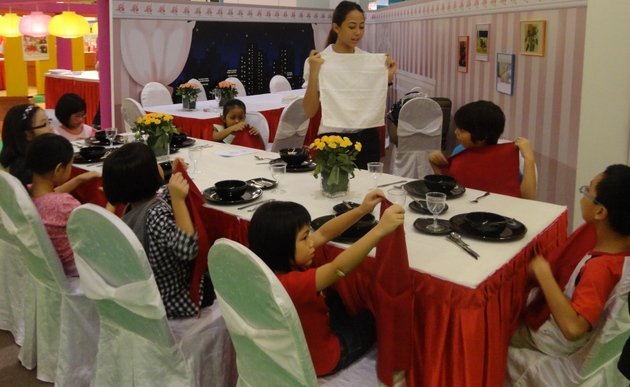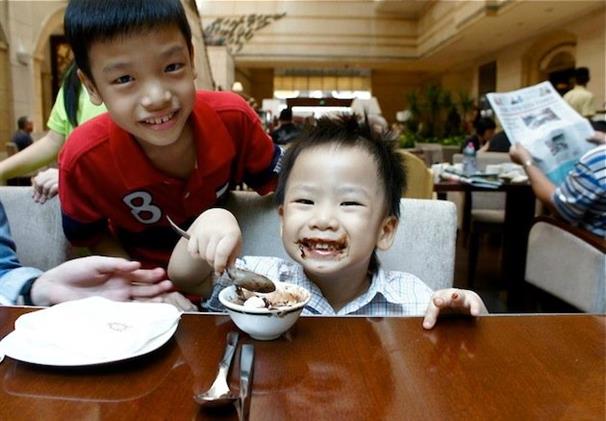
Watch your kid’s table manners!
By Tris Marlis - Thursday, Feb 07, 2013
It is a beautiful Saturday night, you are having a wonderful dinner with your family until your 3-year-old starts crying and spitting food on the floor, your 6-year old is complaining about how he doesn’t like the food, spilling more food on the table, and your husband is just…desperate.
No one enjoys listening to crying children while they’re dining out, parents are no exception. Good or bad, habits don’t develop overnight, and if you spot them early, don’t let it fester, as it is simply good manners to start teaching table manners while they are still young.

It’s not solely because we want to have a peaceful dinner, there’s a greater purpose. Director of the Etiquette School Singapore, Yvonne Anjelina explains: “Our table manners are a reflection of our upbringing and overall character. It is hence crucial to start teaching our children the importance of table manners and etiquette so that they may blend seamlessly with society as they grow older.” Yvonne also suggests to start teaching children table manners as soon as they start to dine at the table with the family, this could be as early as two to three years old.
The very first and most important rule of good manner that kids need to learn is to be respectful to others, and that includes not to cry to make demands or rude comments on food they don’t like. Eunice Tan, Founder of Image Flair, suggests that parents teach their children to use the magic words at the table, such as “please” and “thank you”. “Sometimes rewarding them with small treats when they don’t fuss,” she adds. This training has to start at home, because if children are not required to say thank you at home, they will refuse to do the same in the restaurants.
At Out of the Box Kids’ Club, Centre Manager, Angela Diaz emphasised more on the importance of good posture at the table– eating with mouth close, elbows not on the table and holding utensils with correct hand. These are some of the rules that even adult sometimes forget. Angela explains that when kids put their elbows on the table, they tend to slouch and affects their posture as they grow, while eating with mouth close and using the utensils in proper ways prevent kids from spilling food and making a mess. “You just got to teach them. Like how you should hold fork with your right hand when eating pasta, or to scoop your food into your spoon before you put in your mouth, step by step. Praise them when they do the right thing… praising always work,” explain Angela. She adds that these are little gestures that are often neglected, yet they play important roles in later stage of children’s growth.
For toddlers who are not yet able to speak, they can only cry or scream to express their needs. “Kids get cranky when they are hungry… Encourage the children to drink water to temporary hold the hunger,” suggest Agnes Koh, Director of Etiquette & Image International. It’s also good to pack up some toys to keep the children entertained while waiting for their food.
Annie Dwiwaty, a mother of two, expresses her thoughts on teaching her 3-year-old boy dining etiquette: “By the age of two, you may start teaching your child table manners. My common problem is my boy sometimes spill food on the floor or start shouting when he doesn’t want certain food, calm him down and tell him firmly what is right or wrong to do when eating.” It will slowly develop into good habit, and now her 3-year-old boy holds his own fork and always say ‘thank you,’ taking him our to restaurant is a breeze.
After all, “good manners reap acceptability by the public. Parents are proud when their children behave well in public,” says Agnes.



